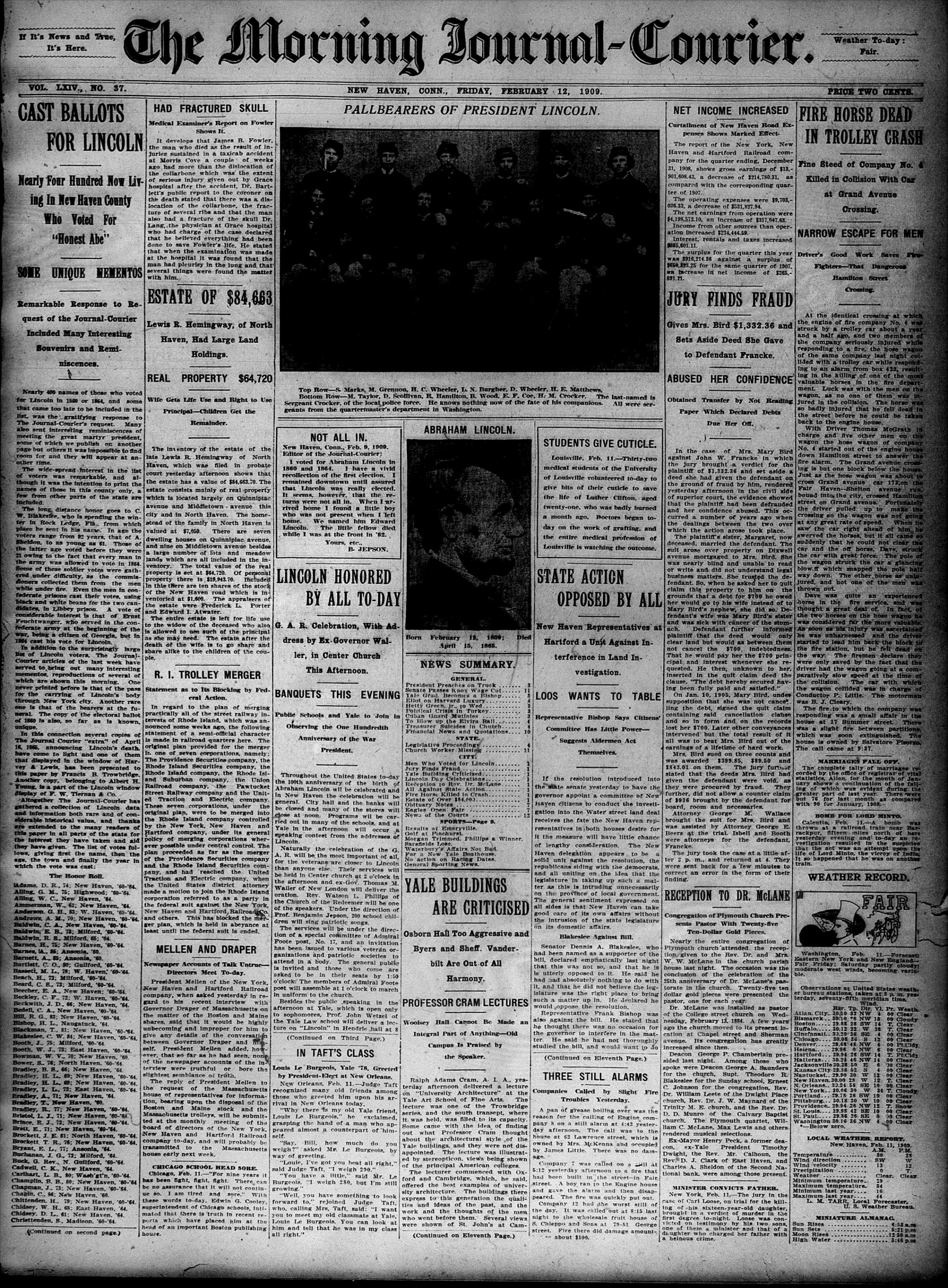New Haven in 1909
In April of 1909, the city of New Haven gathered to celebrate the dedication of the Lincoln Oak. The tree, which was dedicated on the New Haven Green, served to commemorate the centennial of Abraham Lincoln’s birth, which had passed on February 12 of that year. Along with the tree, however, two curious items were dedicated as well—a pair of time capsules, encased entirely in cement, were buried near the oak. Though both the oak tree and the time capsules were meant to celebrate the centennial, the soil at the New Haven Green was likely too frozen to bury them deeply enough in the middle of February. April 9th, the date of the Union Army’s victory at the Battle of Appomattox in 1865, was therefore chosen instead.
The capsules' creation and burial was overseen by members of the New Haven chapter of the Grand Army of the Republic, a fraternal organization of Union Army veterans. The Grand Army was founded in Illinois in 1866, only about a year after the end of the Civil War, and remained active on both a local and national level until its last surviving member died in 1956. During its active years, it was the largest Union Army veterans' organization in the United States and wielded significant political power as one of the nation's first and most organized political lobbies. As one of the first racially integrated fraternities in the country, the Grand Army lobbied in support of voting rights for Black veterans, fought for federal veteran pensions, and helped found Memorial Day as a national observance. The New Haven chapter was notably active in the late 19th and early 20th century–New Haven's famous Soldiers' and Sailors' Monument in East Rock, dedicated in 1887, was originally lobbied for by New Haven Grand Army members.

The individuals involved with planning the capsules remain unknown, and didn't leave any record of their reasons for choosing these specific items, but they seem to follow a general theme. In keeping with the Grand Army's patriotic mission and the centennial of Lincoln's birth, two time capsules were created–enough space to preserve the era of the creators themselves as well as to commemorate Lincoln's memory. Some of the objects were Civil War artifacts, such as two musket balls taken from Gettysburg. Medallions resembling the 1909 Lincoln penny, a medal emblazoned with the Grand Army's insignia, and Grand Army rosters also evoked the patriotic spirit of the centennial. More quotidian objects were chosen as well, such as a stack of local business cards and newspapers published on the centennial and the date of the capsules' burial. Additional items included text of a prayer, various coins, and a speech by Thomas Waller, who served as the governor of Connecticut from 1883 to 1885. The copy of the speech included in the capsule was handwritten, and the speech itself was given at the burial of the two capsules.